Car Accidents
Bike Month: Time for Massachusetts to Think About Safety
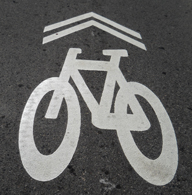 This is National Bike Month, when cyclists gather for events and rides all over the country. In Massachusetts, the busiest time is during Bay State Bike Week, which began last weekend. Cyclists from Boston to Springfield to Cape Cod are being encouraged to pedal to and from work in the name of fitness and reducing traffic congestion on the roads.
This is National Bike Month, when cyclists gather for events and rides all over the country. In Massachusetts, the busiest time is during Bay State Bike Week, which began last weekend. Cyclists from Boston to Springfield to Cape Cod are being encouraged to pedal to and from work in the name of fitness and reducing traffic congestion on the roads.
But along with the fun, Bike Month is a time to ask ourselves and lawmakers if we can make the roads safer to prevent personal injury to bicyclists.
While Boston has been called a world-class cycling city in recent years, safety advocates say we can do better. This month, the League of American Bicyclists dropped the state’s ranking from third to sixth in its 2013 Bicycle Friendly State Rankings, offering these and other suggestions to state officials:
Safe Passing Law. Adopt a safe passing law with a minimum distance of three feet to address bicycle safety.
Vulnerable Road User. Adopt a vulnerable road user law that increases penalties for motorists that injuries or kill bicyclists or pedestrians.
Cell Phone Ban for Drivers. Pass a cell phone ban for all drivers. Currently, Massachusetts bans all drivers from texting while driving but only bans drivers under 18 from talking on their cell phones and driving.
Bicycle Riders Manual. Create a statewide bicycle riders manual with laws, state bike routes and laws for cyclists.
MassBike, the state’s leading advocacy group for cyclists, has been seeking passage of a vulnerable road users bill that increases penalties for drivers who injure or kill a bicyclist or others defined as a vulnerable road user. MassBike first filed a bill with the Massachusetts Legislature in 2011 and refiled a few months ago for the start of the new legislative session.
Under the bill, drivers found guilty of crimes such as motor vehicle homicide or hurting or killing a person while driving drunk would face double the normal fines if the victim is considered a vulnerable road user.
The bill defines vulnerable road users as “a pedestrian or a person operating a bicycle, handcycle, tricycle, skateboard, roller skates, in-line skates, wheelchair, non-motorized scooter or any non-motorized vehicle, or a person riding a horse.”
Additionally, the bill would require violators to take a traffic class and perform 100 hours of community service related to road safety. There would be special penalties for drivers who harass vulnerable users with their vehicles. Meanwhile, victims would be given guidelines for filing civil lawsuits against drivers who assault or threaten them.
Another bill proposed by MassBike is the Bicycle Lane Bill, which would make it a violation for a car to park or stand in a marked bike lane. Boston and some other communities have bans, but MassBike seeks a statewide ban.
Read about other bills filed and supported by MassBike.
Texting While Driving Study: Voice-to-Text is Not Safer

We all have one: a cell phone we keep close by throughout the day, to keep in touch with work and the people in our lives. Many of us now use smart phones so in addition to talking and texting, we have quick access to apps, cameras and other neat gadgets. The bottom line is we get more use from our mobile phones now than ever.
While the conveniences are nice, they are a negative when it comes to driving. Studies have long shown cell phone use of any type is a distraction which can result in drivers taking their eyes off the road and causing motor vehicle accidents.
Most states have some restriction on use. The District of Columbia and 39 states, including Massachusetts, ban texting while driving. Ten states and the District of Columbia ban all phone use by drivers. Massachusetts bans all cell phone use for drivers under 18.
Some say these efforts and related educational campaigns are falling short and the use of smart phones is actually increasing. The market has certainly grown dramatically. By last October, the count was over 1 billion smart phone users worldwide, according to one firm’s report. By 2015, another billion users are expected to get smart phones.
Many new users are using talk-to-text technology while they drive, but a new study finds this is not actually any safer. The study by the Texas A&M Transportation Institute was released during April’s National Distracted Driving Awareness Month. The study was the first to compare voice-to-text and manual texting.
The Study
The transportation institute studied 43 research participants driving a vehicle on a closed course. Drivers traveled the course without any cell phone use, then three more times performing texting exercises. On the first two laps, they used two different voice-to-text applications. On the third lap, they texted manually.
Researchers found driver response was significantly delayed when drivers used voice-to-text or sent text messages. In both cases, drivers took about twice as long to react as they did when they were not texting.
Manual texting required slightly less time than voice-to-text, but driver performance was roughly the same.
One theory for why is drivers who used voice-to-text had to look down at the phone after they spoke their message and check it before sending, taking their attention from the road.
Massachusetts Texting While Driving Law
The Massachusetts law which bans texting while driving is M.G.L. c. 90, Sec. 13B. It took effect Sept. 30, 2010.
Under the law, drivers in Massachusetts are banned from both texting and e-mailing while operating a car. They cannot read or browse the Internet. Voice-to-texting is not specifically addressed in the law.
Some police departments are seeking to enforce the law. In January, West Bridgewater police stopped 51 drivers over four hours on a Saturday afternoon. In March, another four-hour sting caught 43 drivers texting.
Texting while driving is a non-criminal offense which carries a $100 for the first offense, $250 for the second offense and $500 for the third.
Drivers who are texting and driving and cause injury or death can also be criminally charged under M.G.L. c. 90, Sec. 24(2)(a). Read about a recent case.
What to Know About Potholes and Car Accidents
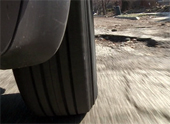
In Massachusetts, we are making the long-awaited transition from winter to spring.
For drivers, that means trading in the challenge of navigating snow-packed roads for dodging potholes.
While potholes often start as small pavement cracks, they can expand quickly if left unrepaired. Hitting even a small pothole can cause hundreds or thousands of dollars in damage to your car as well as serious injury if the driver loses control of the vehicle. Accidents often happen when private property owners and government entities fail to quickly repair roads or set up signage alerting drivers to roadway defects. The law requires all persons to maintain roadways, driveways and sidewalks in a reasonably safe manner. But it also allows a reasonable amount of time to discover and repair the defect.
Around Boston, some communities report hundreds of pot hole car accidents and incidents each year. The city of Boston is trying a new approach to hasten repairs by developing a smart phone app called Street Bump which allows drivers to send the city alerts about defective roadways which need to be fixed.
If Your Car is Damaged by a Roadway Defect
If your car is damaged or you are injured because of a roadway defect,
you can expect your auto insurance collision coverage will cover the damage,
but you will be subject to your deductible, which is often $500 or more. You may also be entitled to other compensation depending on where your accident happened.
It is important to consult an attorney promptly if you are injured in order to protect all of your rights. Here are a few points to keep in mind:
Private Property. Commercial property owners invite the public onto their property for business and have a responsibility to maintain their premises,
including parking lots and driveways, in a reasonably safe manner. If the damage or injury is caused by the negligence of the property owner, then the owner’s liability insurance should cover the losses. The same rule applies to a private landowner; there is a duty to maintain driveways, parking areas, and walkways in a reasonably safe manner for all lawful visitors.
Roads and Highways. Under M.G.L. c. 84, Section 15, cities and towns must properly maintain their public ways. If a community fails to do so and had reasonable notice of the defect, a person injured in an accident on a local road may seek up to $5,000. The municipality must have known about the defect or should have learned of the defect in the exercise of due care and diligence. Gregorie v. Lowell, 253 Mass. 119 (1925). Perfection in road maintenance is not required. Zacherer v. Wakefield, 291 Mass. 90 (1935).
The city or town must receive written notice of the defect within 30 days. Proper written notice is an absolute requirement. In addition, there is an iron-clad $5,000 cap on damages. Unfortunately, any negligence on the part of the driver will be a complete bar to recovery; the rule of comparative negligence does not apply.
In Summary
In summary, potholes are a way of life in Massachusetts. If you have the misfortune of suffering a loss due to a pothole on a public way, there is little likelihood of obtaining relief from any public entity.
Toyota Settles One of First Wrongful Death Cases
 A month after being assessed a record $17.4 million fine, Toyota Motor Corp. has settled one of the first wrongful death lawsuits involving sudden and unintended acceleration by its vehicles.
A month after being assessed a record $17.4 million fine, Toyota Motor Corp. has settled one of the first wrongful death lawsuits involving sudden and unintended acceleration by its vehicles.
The Japanese automaker confirmed last week it had reached an agreement with the family of Paul Van Alfen and his son’s fiancee, Charlene Jones Lloyd, for an undisclosed amount in the November 2010 accident in which they died, USA Today reported. The automaker said it has also settled another case filed under California’s lemon law by a retired Los Angeles police officer.
Van Alfen and Lloyd were killed in 2010 when the Toyota Camry they were traveling in on Interstate 80 in Utah suddenly accelerated. Van Alfen, the driver, attempted to stop the vehicle, but ran through a stop sign and into a wall. His other passengers, his wife and his son, were injured. The Utah Highway Patrol investigated and determined the car accident was the result of a sticking gas pedal.
Other Injury Lawsuits. The settlement comes as a group of lawsuits consolidated in U.S. District Court in Santa Ana, California moves forward. Prior to the consolidation, Toyota had also reached a $10 million settlement in a case involving an auto accident which killed a California police officer and his family.
The officer and his family were killed near San Diego in 2009 when their Lexus accelerated above 120 mph, struck an SUV, rolled off an embankment and burst into flames. The car accident was blamed on a improperly sized floor mat which was trapped in the accelerator.
More Than $1 Billion Settlement. In December 2012, Toyota agreed to a settlement worth more than $1 billion to resolve hundreds of lawsuits claiming economic losses by car owners affected by its recalls. In recent years, the car manufacturer has recalled more than 14 million vehicles due to acceleration problems and brake defects.
$17.4 Million Fine. The National Highway Traffic Safety Administration issued Toyota a $17.4 million fine for safety defects in December 2012, the largest ever imposed. In 2010, the company paid a total of $48.8 in a series of three fines.
Related:
Toyota settles first wrongful death lawsuit, USA Today.
Toyota tackles acceleration lawsuits; questions remain, USA Today.
Toyota reaches $1 billion settlement in acceleration cases, USA Today.
Read More
Drowsy Driving Accidents Are Preventable
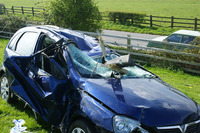 Younger drivers are the most likely to drive drowsy, with one out of seven drivers ages 16-24 admitting to nodding off behind the wheel at least once in the past year, a National Sleep Foundation study found.
Younger drivers are the most likely to drive drowsy, with one out of seven drivers ages 16-24 admitting to nodding off behind the wheel at least once in the past year, a National Sleep Foundation study found.
The National Sleep Foundation released its study for its annual campaign, Drowsy Driving Prevention Week, from Nov. 12-18. The foundation’s study also found one in 10 of all licensed drivers admitted to falling asleep during the past 12 months. The AAA Foundation for Traffic Safety estimates that about one in six deadly car crashes involves a drowsy driver. In addition to drivers who are falling asleep, the National Sleep Foundation’s 2011 Sleep in America poll found that among those who drove, 52 percent indicated they have driven drowsy and 37 percent had done so in the past month.
Across the country, four states have laws related to drowsy driving: New Jersey, California, Utah and Florida.
The laws vary, providing for a mix of educational campaigns, research and in New Jersey, a law criminalizing drowsy driving. Maggie’s Law states a drowsy driver – one who has not slept in 24 hours – qualifies as a reckless driver who can be convicted of vehicular homicide. The law was passed in 2002 following a car accident which claimed the life of 20-year-old college student Maggie McDonnell. The student was struck by a driver who had not slept for 30 hours and had been using drugs.
The jury deadlocked in the first trial involving the fatal car crash. During the second trial, the defense lawyers argued that there was no law against falling sleep behind the wheel in New Jersey so the driver did nothing wrong. The driver received a suspended jail sentence and $200 fine.
In Massachusetts, Sen. Richard T. Moore, (D-Uxbridge) has proposed “Rob’s Law,” which was placed under a study order this summer. The legislation is named for Major. Robert Raneri of the United States Army Reserve, who was killed in 2002 by an admitted drowsy driver on his way to work at Fort Devens.
The bill would make it a criminal offense for drivers to drive drowsy in Massachusetts. In cases where drivers cause a car accident resulting in death, they could be charged with homicide by a motor vehicle while under the influence of an intoxicating substance.
Drowsy driving car accidents can be prevented through awareness and good decisions. Our Boston car accident attorneys offer this list of signs which should serve as warnings not to drive:
- Difficulty focusing, frequent blinking and heavy eyelids.
- Driving mistakes such as drifting from your lane and swerving.
- Not seeing other cars until they are immediately near you.
- Daydreaming.
- Trouble keeping your head up.
- Disobeying traffic lights or failure to see them change until another driver honks.
- Missing traffic exits.
- Not remembering traveling the last few miles.
- Yawning.
- Restlessness, irritability or aggression.
Other steps to avoid drowsy driving and car accidents:
- Get a good night’s sleep of seven to nine hours at night.
- Do not be in a rush to arrive at your destination.
- Avoid driving long distances alone when you can.
- Avoid alcohol and medications that cause drowsiness.
- Consume caffeine if you need it.
- Avoid driving at times you are normally asleep.
- For long distance travel, take a break every 100 miles or 2 hours. Get a snack, change drivers, take a walk.
- Make sure you eat regular meals and snacks.
- If you need, stop and find a safe place to nap.
- Avoid alcohol and medications that cause drowsiness.
Related:
Bill S.1773: An Act relative to drowsy driving.
Drowsy Driving, National Sleep Foundation.
Read More
Child Passenger Safety Week: a Reminder Car Seats are Critical to Protecting Children
If you have children, your car probably has at least one car seat buckled in at all times. But when was the last time you checked its positioning or if your child is using the right model?

A good answer is right now. The National Highway Traffic Safety Administration (NHTSA) is observing Child Passenger Safety Week from Sept. 16 – 22. Sept. 22 is National Seat Check Saturday. Parents can click here and find a full list of sites throughout Massachusetts offering free car seat checks by certified and trained professionals.
The right car seat and positioning is critical because motor vehicle crashes are one of the leading causes of death among children ages 3 to 14. A car accident can come suddenly without warning and a child passenger safety seat is essential to keeping young passengers safe.
Child passenger seats are generally divided into four categories: infant carrier seats, rear-facing seats, forward-facing seats and booster seats.
All 50 states and the District of Columbia require child safety seats and all but two – Florida and South Dakota – require booster seats or similar devices for children who have outgrown safety seats.
The Massachusetts Child Passenger Safety Law requires all children riding in passenger motor vehicles be in a federally-approved child passenger restraint which is properly fastened and secured until they are 8 years old or over 57 inches tall. The number of children increased substantially with the passage of the Booster Seat Bill in 2008.
About Child Passenger Seats
Infant carrier seat. These are for children up to 1 year of age who weigh 20 pounds. The height limit is up to 26 pounds.
Rear-facing convertible seat. These are for children who are 6 months to 1+ year of age, who weigh under 30 pounds.
Forward-facing seat. These are for children over 1 year of age who weigh more than 20 pounds and under 40 pounds.
Booster seat. These are for children age 4 to 8. When students turn 8 and stand taller than 4 feet 9 inches, they can transition to a back seat belt. It is recommended children travel in the backseat wearing a seatbelt up until the age of 13.
Related:
- Enhanced Child Passenger Safety Law, Commonwealth of Massachusetts.
- State Child Passenger Safety Laws, Governors Highway Safety Association.
Car Accident Study: Drivers Who Use Cell Phones May Show Other Risky Behaviors
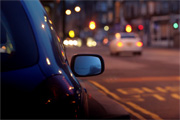 A new study raises the question of whether driving while using a cell phone is the safety risk or a symptom of a larger problem: an aggressive driver with dangerous habits.
A new study raises the question of whether driving while using a cell phone is the safety risk or a symptom of a larger problem: an aggressive driver with dangerous habits.
Researchers at the Massachusetts Institute of Technology (MIT) found drivers who engaged in frequent cell phone use are higher-risk, even when their phone is out of use. The researchers studied the behavior of 108 Greater Boston drivers. About half admitted to frequent cell phone use while the others said they rarely talked behind the wheel.
The frequent cell phone users tended to drive faster, changed lanes more often and spent more time in the far-left lane. They were also more likely to accelerate rapidly and slam on the breaks.
The data supports the focus on cell phone use: The National Safety Council (NSC) estimates about 1 of 5 car accidents involve drivers who were on the phone.
But researchers say even as the number of cell phones has increased nationwide, the number of car accidents has not, leading to one possible conclusion that drivers who talk behind the wheel are also engaging in other risky behaviors.
Massachusetts is among 39 states which have banned texting while driving. Ten other states ban talking on the phone unless a driver uses a hands-free device. Recently in Massachusetts, lawmakers have considered full cell phone bans to reduce car crashes.
Researchers are investigating whether the answer lies beyond new laws. They are considering retraining programs for drivers which discourage cell phone use and provides warning about other bad habits. Focus is also on auto collision warning systems or sensors which identify when cars cross a lane.
Related:
- It’s not the cell phone, but the driver that’s high risk, The Boston Globe.
- Texting while driving accidents, Breakstone, White & Gluck.
- Distraction.gov.
Car Accident Deaths Rise Among Teens
 After several years of decreases in U.S. teen driving deaths, new data shows the number climbed slightly in the first half of 2011.
After several years of decreases in U.S. teen driving deaths, new data shows the number climbed slightly in the first half of 2011.
Car accidents have long been the leading cause of death among U.S. teens, accounting for more than one in three fatalities, according to the Centers for Disease Control and Prevention (CDC). But new preliminary data collected by the Governors Highway Safety Association (GHSA) shows an increase in teen driving deaths as the number of overall highway deaths is declining – as is the number of overall teen deaths. The data was submitted to the National Highway Traffic Safety Administration (NHTSA).
The data shows the number of 16-year-olds killed increased from 80 in the first half of 2010 to 93 in the first six months of 2011. The number of 17-year-olds killed rose from 110 to 118 during the same period.
The nation has not seen an increase in eight years. During that time, many states have passed graduated driving laws for teenagers with a goal of reducing car accident deaths. The Massachusetts Junior Operator Law states drivers under 18 cannot drive with another passenger under 18. The only exception is for for siblings. Teen drivers are also not allowed to drive between 12:30 a.m. and 5 a.m. In September 2010, the Safe Driver Law took effect, prohibiting drivers under 18 from using cell phones while driving.
In a Washington Post article published Feb. 17, Barbara Harsha, executive director of GHSA, called on Congress to provide financial incentives to states which have strengthened teen driving laws and for the NHTSA to work on efforts to reduce distracted driving among teens and increase seat belt use.
A Pew Research Center study showed 43 percent of teens have talked on a cell phone while driving and 48 percent have been in a car with an operator who was texting while driving.
Related:
Massachusetts Social Host Ruling Limits Responsibility
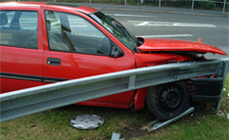 Teenagers who host underage drinking parties but do not supply alcohol cannot be held liable in Massachusetts for injuries suffered by their guests, the state’s highest court has ruled. The ruling continues to limit liability to social hosts who either serve alcohol or exercise effective control over the supply of alcohol.
Teenagers who host underage drinking parties but do not supply alcohol cannot be held liable in Massachusetts for injuries suffered by their guests, the state’s highest court has ruled. The ruling continues to limit liability to social hosts who either serve alcohol or exercise effective control over the supply of alcohol.
The Supreme Judicial Court also released parents or property owners from any liability if they did not know about the drinking or did not provide alcohol.
The case was brought by the family of Rachel Juliano and her parents against Christopher Dunbar and Peter Simpson, then later also his daughter Jessica Simpson. In 2007, Juliano, then 16, and Dunbar, then 19, went to a party at Jessica Simpson’s Wrentham home. The two had brought their own alcohol and consumed it at the gathering. Simpson, then 19, was home alone, and her father was away and unaware of the party.
After a few hours, Dunbar left in his car with Juliano and had a car accident, leaving her with brain damage. Prior to leaving the party, the two had been arguing. Jessica Simpson intervened and proposed she drive the two home.
In its decision, the Supreme Judicial Court said it was “asked to enlarge the scope of social host liability under our common law by extending a duty of care to an underage host who does not supply alcohol to underage guests, but provides a location where they are permitted to consume it. … [W]e decline to do so, and reaffirm that liability attaches only where a social host either serves alcohol or exercises effective control over the supply of alcohol.”
There were two concurring opinions. Three of the justices agreed with the result, but did not agree with the reasoning of the majority in the case. This case has now been remanded to the Superior Court for further proceedings.
Although the Supreme Judicial Court has the authority to define the common law, and to determine the extent of legal duty that one person has to another, the court declined to expand that duty in this case. The Court has been active in recent years. For example, in 2010, the Court changed the common law in snow and ice cases, abrogating the old Massachusetts law that recognized distinctions between natural and unnatural accumulations. Papadopoulos v. Target Corporation, SJC-10529 (July 26, 2010).
The Court also expanded the duty of limousine services which transport customers from party to party where heavy alcohol use is evident; the Court defined a duty to ensure that the drunken passenger had safe passage from the point of pick-up to drop-off at the end of the night. Commerce Insurance Co. v. Ultimate Livery Service, Inc., SJC-10149 (November 26, 2008).
Unfortunately, the Court’s opinion in the Juliano case means that the court will likely not re-examine other areas which are ripe for consideration, such as cases where adults knowingly permit underage drinking, and cases where bars knowingly serve large quantities of alcohol to patrons who by objective measure would be intoxicated, but who did not appear drunk. (For example, a patron may not show signs of intoxication after four or five mixed drinks, but would certainly exceed the state OUI limit of .08.)
Underage drinking and driving under the influence remain serious problems in Massachusetts. There is no pressure from the Supreme Judicial Court to treat these ills. Instead, the Court has left these problems for the legislature to address. Given the fact that the legislature has declined to take any needed action for many years, we can expect injuries and deaths caused by drunken driving to continue unabated.
Click here to read Juliano v. Simpson, (SJC-10843, February 21, 2012).
Click here to read about the Massachusetts social host liability law.
Read More
Massachusetts Car Accident Insurance: What Coverage Do You Need?
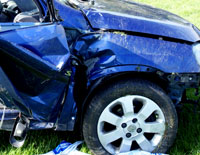 Buying car insurance in Massachusetts can seem complicated, with various types of coverages and state laws which have changed in recent years. The state requires all drivers to carry some level of insurance, but in 2008, drivers gained new buying options as Massachusetts moved away from a highly regulated industry to managed competition. At the same time, insurers have started changing their policies, so not all companies use the standard Massachusetts policy.
Buying car insurance in Massachusetts can seem complicated, with various types of coverages and state laws which have changed in recent years. The state requires all drivers to carry some level of insurance, but in 2008, drivers gained new buying options as Massachusetts moved away from a highly regulated industry to managed competition. At the same time, insurers have started changing their policies, so not all companies use the standard Massachusetts policy.
In the past, the state had set rates. But under “managed competition,” each insurance company can set its own price and compete for consumers’ business.
If you are a Massachusetts driver, you should shop around to obtain the best rates while still buying adequate insurance to protect yourself in a car accident. Here, the Boston car accident lawyers at Breakstone, White & Gluck offer some tips on what to consider before purchasing auto insurance for you and your family:
Compulsory Coverage
Massachusetts requires drivers to buy basic car insurance coverage, including:
- Bodily Injury to Others: $20,000 per person, $40,000 per accident
- Personal Injury Protection: $8,000 for medical bills and lost wages
- Bodily Injury from an Uninsured Driver: $20,000 per person and $40,000 per accident
- Damage to Another Person’s Property: $5,000
Optional Coverage
The compulsory coverage provides insufficient protection for car accidents. These other insurances offer additional protection.
- Bodily Injury: You can buy up to $500,000 per person per accident. If you cause a serious motor vehicle accident, this protects you from claims against your personal property.
- Underinsured Auto: You could be injured by another driver who does not have car insurance. You can protect yourself by purchasing up to $500,000 in coverage per person per car accident.
- Medical Payments: This coverage pays for medical expenses that exceed your $8,000 PIP coverage. You can obtain an extra $10,000 in coverage for a small cost.
- Collision Comprehensive. This coverage pays for damages to your vehicle in a car accident. This coverage is paid by the policy of the driver found to be at fault. Many people choose a high deductible to save money on their policy price, but this can cost you far more if you caused a car accident and have to pay a deductible for your own vehicle.
Click here for information on auto discounts and how to get additional insurance coverage through your homeowners’ insurance policy.
Related Blogs, Articles and Websites

